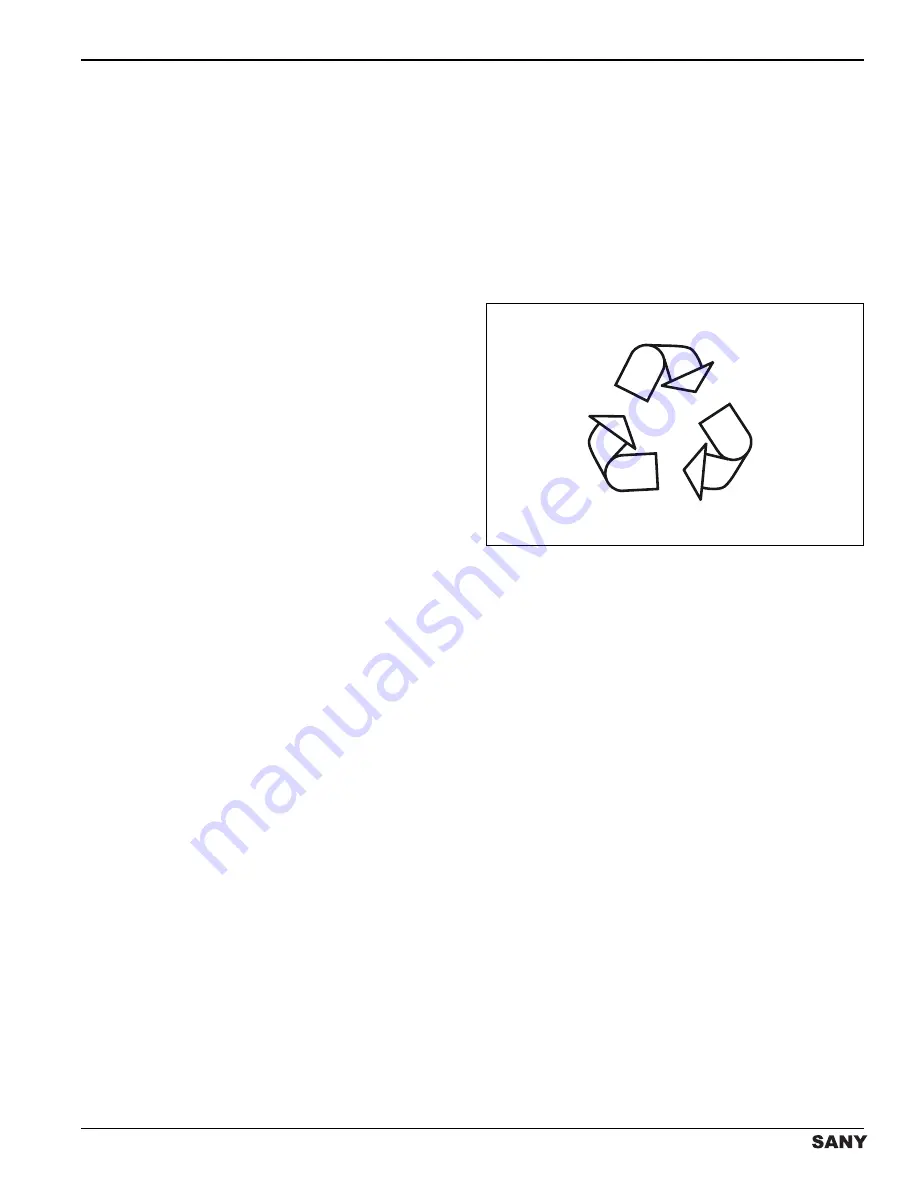
SAFETY
2-7
SY60C Excavator OMM
When traveling over rough ground, travel at a low speed
and steer carefully. Whenever possible, avoid traveling
over obstacles or raised areas. Traveling over obstacles
or raised areas could result in loss of control or damage
to the machine. When traveling over raised areas, always
travel at a low speed.
During travel, always maintain a safe distance from
people and surrounding objects. Always check to make
sure areas such as bridges and roadways will support the
weight of the machine before attempting to cross.
Before traveling in public areas, always gain approval
from local authorities and follow their instructions.
Raise work equipment 8 in.–12 in. (20 cm–30 cm) above
the ground when traveling.
When traveling or operating in shallow water, be aware of
its depth and current.
Inclined Areas
Traveling on an incline can be dangerous. In order to
prevent tipping, loss of control, or a rollover, it is
important to follow these rules:
• Always check the firmness of the inclined surface
before attempting to travel on it.
• Always travel straight up or straight down an incline.
• Avoid turning on an incline.
• Avoid sudden stops.
Snow or Frozen Surfaces
Be careful when traveling or operating the machine on
frozen or snow-covered surfaces. The ability to
maneuver the machine is seriously affected. The
machine may not respond as expected when turning.
Other precautions are:
• Avoid any rapid movement, acceleration, or quick
stopping. Always be aware of the increased
stopping distance required on these surfaces.
• Avoid deep snow or frozen bodies of water.
• Even a slight incline may cause the machine to slip.
Be extra careful when working on an inclined
surface covered with snow or ice.
• When traveling or moving the machine on a
snow-covered incline, allow the machine to come to
a stop slowly.
Avoid Backover Accidents
Keep the windows, mirrors, and lights clean and in good
condition.
Before moving the machine, make sure all bystanders
are clear of the intended path.
Before moving the machine, warn others with the horn.
Use a signalman if the view is obstructed when backing
up. Keep the signalman in view at all times.
Dust and Chemical Hazards
Hazardous dust or chemicals present a serious danger
when they are released or mishandled. All workers
involved should use approved personal protective
equipment (PPE) and follow all environmental safety
regulations.
Consult the Safety Data Sheet (SDS) for guidelines on
personal protective equipment (PPE), proper handling
and cleanup, and correct reporting agencies if needed.
Environmental Precautions
0003052
Figure 2-2
Oils and coolants poured onto the ground, into bodies of
water, into storm drains, or tossed into trash cans (even
in a sealed container) can contaminate and pollute soil,
groundwater, streams, and rivers.
Recycling used oil, coolants, and filters helps conserve
natural resources and is good for the environment.
Obey all regulations when disposing of harmful items
such as oil, fuel, filters, batteries, hydraulic oil, and used
parts.






































